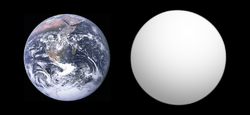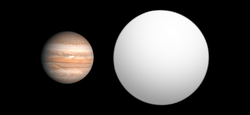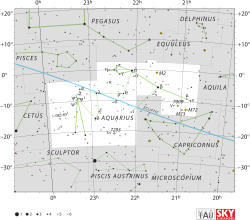PIA21428 - TRAPPIST-1 Comparison to Solar System and Jovian Moons
The seven planets of TRAPPIST-1 are all Earth-sized and terrestrial, according to research published in 2017 in the journal Nature. TRAPPIST-1 is an ultra-cool dwarf star in the constellation Aquarius, and its planets orbit very close to it.
The system has been revealed through observations from NASA's Spitzer Space Telescope and the ground-based TRAPPIST (TRAnsiting Planets and PlanetesImals Small Telescope) telescope, as well as other ground-based observatories. The system was named for the TRAPPIST telescope.
NASA's Jet Propulsion Laboratory, Pasadena, California, manages the Spitzer Space Telescope mission for NASA's Science Mission Directorate, Washington. Science operations are conducted at the Spitzer Science Center at Caltech, also in Pasadena. Spacecraft operations are based at Lockheed Martin Space Systems Company, Littleton, Colorado. Data are archived at the Infrared Science Archive housed at Caltech/IPAC. Caltech manages JPL for NASA.
For more information about the Spitzer mission, visit http://www.nasa.gov/spitzer and http://spitzer.caltech.edu.Relevante Bilder
Relevante Artikel
Trappist-1Trappist-1 ist ein etwa 40 Lichtjahre von der Erde entferntes Planetensystem. Nachdem zunächst nur der Zentralstern, ein massearmer Roter Zwerg, 1999 beim Two Micron All Sky Survey entdeckt worden war und die Katalogbezeichnung 2MASS J23062928-0502285 erhalten hatte, wurde das Planetensystem nach der weiteren Erforschung mit dem Transiting Planets and Planetesimals Small Telescope (TRAPPIST) am La-Silla-Observatorium in Chile Trappist-1 genannt. .. weiterlesen
ExoplanetEin Exoplanet ist ein planetarer Himmelskörper außerhalb des vorherrschenden gravitativen Einflusses unserer Sonne, aber innerhalb des gravitativen Einflusses eines anderen Sterns oder Braunen Zwergs, der eine ausreichende Masse hat, um eine annähernd kugelförmige Gestalt anzunehmen. Extrasolare Planeten gehören also nicht unserem Sonnensystem, sondern anderen Planetensystemen an. .. weiterlesen
PlanetEin Planet ist ein Himmelskörper, der einen Stern oder Braunen Zwerg umkreist und dessen Masse nicht ausreicht, um Kernfusion in Gang zu setzen. Er leuchtet daher nicht selbst, sondern reflektiert nur das Licht des Sterns. .. weiterlesen























